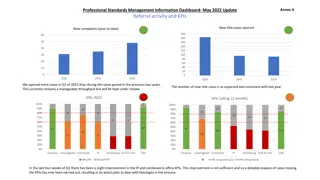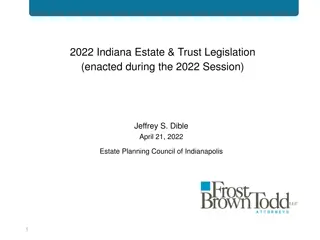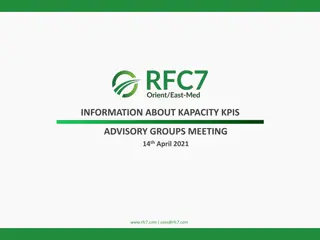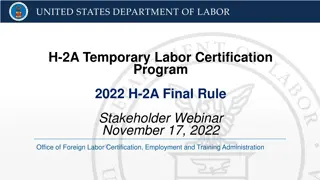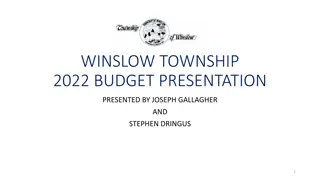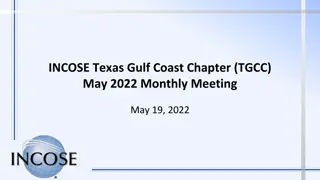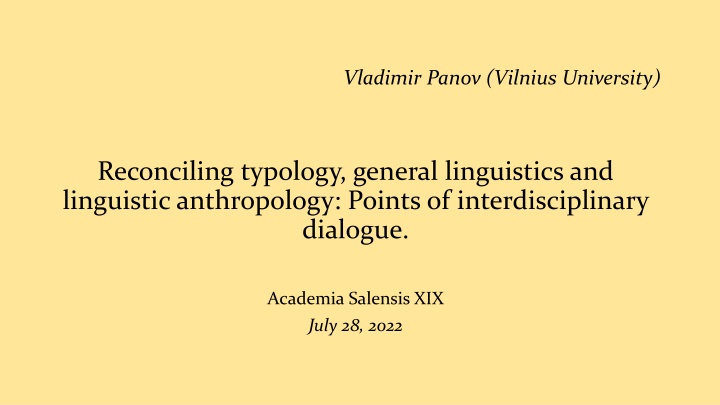
Reconciling Typology in Linguistics and Anthropology
Explore the interdisciplinary dialogue between mainstream linguistics and linguistic anthropology, examining language as a system and in social contexts. Learn about key scholars, methodologies, and the development of these fields.
Download Presentation

Please find below an Image/Link to download the presentation.
The content on the website is provided AS IS for your information and personal use only. It may not be sold, licensed, or shared on other websites without obtaining consent from the author. If you encounter any issues during the download, it is possible that the publisher has removed the file from their server.
You are allowed to download the files provided on this website for personal or commercial use, subject to the condition that they are used lawfully. All files are the property of their respective owners.
The content on the website is provided AS IS for your information and personal use only. It may not be sold, licensed, or shared on other websites without obtaining consent from the author.
E N D
Presentation Transcript
Vladimir Panov (Vilnius University) Reconciling typology, general linguistics and linguistic anthropology: Points of interdisciplinary dialogue. Academia Salensis XIX July 28, 2022
Linguistics vs Linguistic anthropology Two angles of looking at human linguistic interaction. Mainstream linguistics . Language ( langue , competence ) vs speech ( parole , performance ) dichotomy. Focus on the former. The written language sentence (John/Mary read a book) as the basic unit of analysis. Language is to be studied as if it were a physical object. Reification. Language is a shared code which serves for communicating information. Focus on the individual knowledge of a language - cognitive symbolic representation. METHODOLOGICAL INDIVIDUALISM. Classical (Gricean) pragmatics. View of speakers as rational agents pursuing their goals. Cooperative principle. Compositionality: smaller discrete building blocks compose larger blocks.
Linguistics vs Linguistic anthropology Two angles of looking at human linguistic interaction. Mainstream linguistics . LANGUAGE-THE-SYSTEM > SENTENCES > CONTEXT > LIFE Examples: structuralism formal syntactic frameworks cognitive linguistics grammar writing typology classical pragmatics ((neo-)Gricean, Searlean)
Linguistics vs Linguistic anthropology Two angles of looking at human linguistic interaction. Linguistic anthropology/anthropological linguistics . Dell Hymes, Michael Silverstein, Alexandro Duranti, Elinor Ochs (LA). Nicholas Evans, Nick Enfield (AL). Conversation analysis (Sacks & Schegloff). Focus on speech (performance), not the system ( language ) Linguistic exchanges are viewed as embedded in human life => language as a social, not individual cognitive phenomenon. Language as a tool rather than a code (<Wittgentsein, LANGUAGE GAMES; Austin) Ethnographic fieldwork method Participant observation Video recording of spontaneous communication Focus on social meaning (e.g. power relations, gender indexing etc.) LIFE > CONTEXT > UTTERANCES > GRAMMAR AND OTHER CONVENTIONS
Linguistics vs Linguistic anthropology Mainstream linguistics developed from historical comparative linguistics through Saussure. By contrast, linguistic anthropology developed from ethnography and socio- cultural anthropology. The two views have been influencing each other but a disciplinary independence has been preserved. Example: structuralism in anthropology <= Saussurean linguistics Some scholars represent both traditions: Boas, Sapir, Silverstein, Enfield. The intermediate position of usage-based linguistics, especially Paul Hopper, Joan Bybee, Michael Tomasello, Nicholas Evans, some versions of CxG (Traugott, Hoffmann. Goldberg, Diessel). Both disciplines have undisputable achievements. Is a synthesis possible?
1. Agency Animacy/empathy etc. hierarchies: first/second person pronouns < third person pronoun < proper name < human common noun < nonhuman animate common noun < inanimate common noun (Croft 2003 adapted from Dixon 1979) speaker > addressee > kin > rational > human > animate > inanimate Smith-Stark s (Animacy) Hierarchy as reported in Corbett (2001) Audring (2009) hierarchy of individuation
1. Agency Anthropologists and linguistic anthropologists prefer the notion of AGENCY. (1) Agency is here understood as the property of those entities (i) that have some degree of control over their own behavior, (ii) whose actions in the world affect other entities (and sometimes their own), and (iii) whose actions are the object of evaluation (e.g. in terms of their responsibility for a given outcome). (Durnati 2004: 453)
1. Agency Question: Where are these hierarchies? Individual mind? Universal cognitive properties? Culture? Duranti (Politics and grammar, 1990) takes an ethnographic approach and focuses on the micro-level and discourse. Talks at fono the regular assembly of inhabitants in a Samoan village. Samoan is an ergative language. In the real-life speech, the use of the ergative construction is restricted to very specific referents: The Christian God Chiefs Families Persons accused of misconduct or a crime In Duranti sview, The ergative-marked agency in Samoan is the actualization of mana, a common Polynesian emic category ( responsibility ).
1. Deixis Deictics/demonstratives cannot be accounted for without reference to the extralinguisticcontext of their use. Shifters. In mainstream linguistics (e.g. Diessel 1999), oppositions such as this vs that or here vs there are usually explained in terms of proximity, i.e. spatial contiguity in relation to the deictic center (normally, the speaker). Linguistic anthropologists (Hanks 1990, 2005, 2009; Enfield 2003, 2013) argue against this view and stress the interactional and social nature of deixis. This <mainstream> picture has wide appeal because it fits with the commonsense idea that speech is ultimately a matter of individual persons expressing private experiences and thoughts to other individuals in a material world It is hard to miss in it the modern Euro- American notions of the isolated individual, the universality of the body, and the naturalness of the physical. But this common sense obscures critical aspects of deixis, including the mutual orientation of interactants, all nonperceptual modes of access such as background knowledge, memory, and anticipation, and all that is part of a social setting and the relations between participants but not embodied in physical objects (Hanks 2005).
1. Deixis To understand deixis from the viewpoint of a solitary Spr in physical space is like analyzing a boxing match, a tango, a poker game or a football match by looking only at one party to the interaction. The question for deixis is not Where is the referent? but How do we identify the referent in relation to us? According to Hanks, the Maya deictic terms can only be understood by taking into account the human bodies of the participants, social relations, as well as the material world where they interact. Meaning is embedded in a phenomenal field, i.e. a field of acting and thinking that becomes relevant as participants move through it with their body and their senses. Builds on the phenomenological theory of Merleau- Ponty. Space in the world of humans is inherently social.
1. Deixis Deictic reference in Hanks model
1. Deixis Some Hanks conclusions. One cannot completely understand deixis without activelyengaging with a particularsocial, natural and builtenviromnent. Participant observation fieldwork + elicitation + video recording. Examples: only the senior head of a Maya household can use here when referring to the whole household. even within a walled patrilocal compound, one brother s area istreated as over there It is only the senior head who can use the 1SG form when speaking of collective projects. Deixis is not just a spatial but a social category. The web of kinship, gender, and residence interact with the sense of here and there.
1. Deixis: Lithuanian demonstratives The traditional description (Ambrazas 2006) [only singular masculine forms]: is/ itas anas tas Has been demonstrated to be inadequate, at least for colloquial Lithuanian proximal distal neutral (Jud entyt ( ink nien ) 2017): Anas is almost absent from colloquial language. Tas is rather used in distal contexts. However, is/ itas vs tas opposition cannot be reduced to physical distance. Using the framework proposed in Yule (1996), the notion of psychological distance is referred to. E.g., when speaking about the buildings on the Cathedral square the informants normally used proximal pronouns. Given Hanks insights it seems that more subtle social meanings than just psychological distance (somewhat vague) are at play. Deserves more fieldwork-based research.
The emergent grammar In a series of publications (1988, 2011, 2012), a prominent proponent of usage- based approach Paul Hopper comes very close to the views shared by linguistic anthropologists. Hopper (2012): The fundamental temporality of spoken language implies the paradox that structure itself is unstable and intrinsically incomplete, and is constantly being created and recreated in the course of each occasion of use. In sum: linguistic structure arises all the time whenever people talk but never arises completely. There is no a priori grammar/fixed code. Every descriptive grammar of a language is inherently incomplete and is the result of reification of a language. The written language bias in traditional linguistics (Linell, 2005).
The emergent grammar Hopper explicitly invokes Anthony Giddens structuration theory in order to explain the nature of regularities in language. ST is an example of a practice theory, whose most well-known representative is Pierre Bourdieu (habitus). Structuration and habitus: dialectic/recursive relations between the structure and the agency. Giddens (1979: 77-78) on language: when I utter a grammatical English sentence in a casual conversation, I contribute to the reproduction of the English language as a whole. This is an unintended consequence of my speaking the sentence, but one that is bound indirectly to the recursivenessof the duality of structure. From an individual perspective, the structure is accounted for as procedural or embodied knowledge, or KNOWLEDGE-HOW (propositional knowledge).
The emergent grammar The canonical English pseudocleftconstruction (Hopper 2012): What they `dislike is the incessant `rain. Spoken:
Social cognition In all his work on learning, socialization, language acquisition and the origins of human communication Michael Tomasello stresses the social nature of (seemingly) individual cognition. Human cognition and linguistic communication are only made possible through the phenomenon of JOINT ATTENTION. Tomasello (2003): Is reminiscent of Hanks deictic reference schema
Cognitive science: extended mind An increasingly influential stream in cognitive science refuses the Cartesian model of mind the centrality of brain processes for understanding cognition. 2Es approaches: embodied, embedded, enactive, extended cognitive (Rowlands 2010). Inspired by Merleau-Ponty s phenomenology and later Wittgenstein. Embodied involving more than the brain, including a more general involvement of bodily structures and processes. Embedded functioning only in a related external environment. Enacted involving not only neural processes, but also things an organism does. Extended into the organism's environment. Example: Tetris game. Radical enactivism (Hutto & Myin 2017) denies cognitive representations altogether. A sort of neo-behaviorism.
Conclusions Both mainstream linguistics and linguistic anthropology contribute to our understanding of human language-based interaction. Linguistic-anthropological descriptions of some phenomena like the ones of Duranti or Hanks seem adequate to their fields. They might be integrated into the reference grammar of a langauge (e.g. Enfield s grammar of Lao). Usage-based linguistics and cognitive science have made steps toward recognizing the importance of the social and emergent rather than individual and representational model of language. They have also moved away from the reification of language-the-system of Saussure. Convergent development of UBL and LA. Linguistic anthropological descriptions challenge the work of cross-linguistic comparison as their fine-grained descriptions are highly emic and culture-specific. E.g. are comparative concepts compatible with Hanks and Duranti s insights? Foundations for cross-linguistic comparison should be revised. E.g., reproduction of comparable settings in different cultural environments, not just elicitation and use of corpora.

